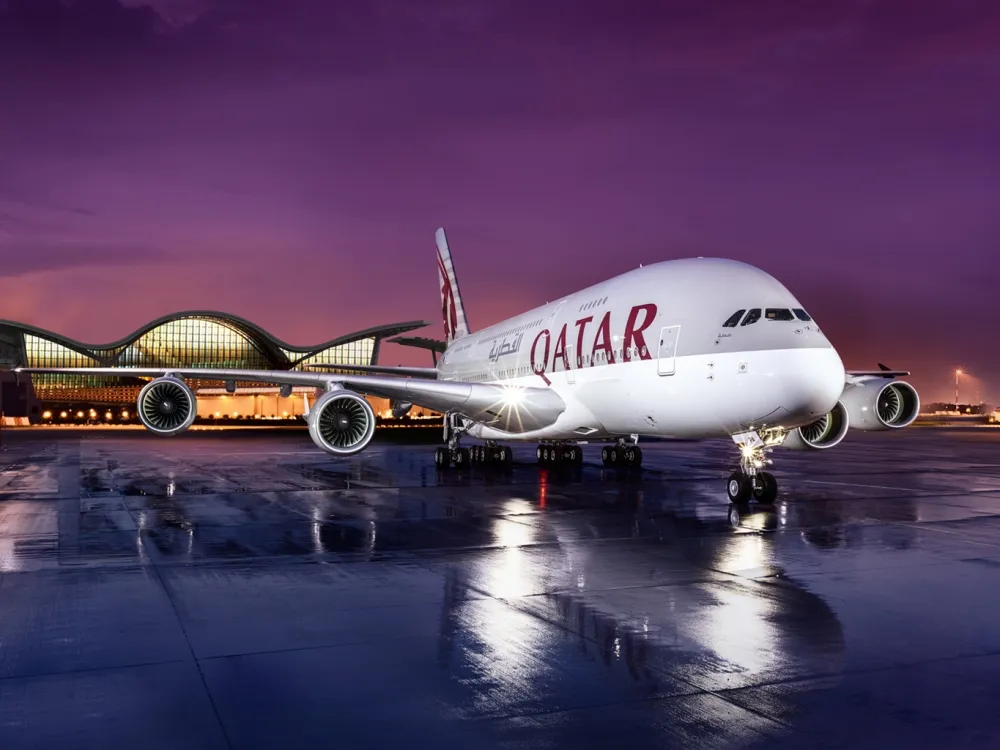
More airlines opt for ultra-long-haul flights
Oct 09, 2018

More airlines are increasingly choosing to operate ultra-long-haul flights, catering to the growing demand for non-stop travel between distant destinations. This shift allows airlines to connect major cities with minimal layovers, enhancing convenience for passengers. The trend is driven by advancements in aircraft technology, which enable longer journeys without the need for refueling. As travelers seek more direct routes, airlines are capitalizing on this opportunity to expand their networks and attract business and leisure travelers alike. This evolution in air travel is reshaping the industry, providing enhanced options for those looking to traverse the globe efficiently.
The aviation industry has witnessed a significant trend in recent years as more airlines opt for "ultra-long-haul flights". This shift not only reflects changing passenger preferences but also highlights the strategic moves made by airlines to maximize profitability while minimizing operational costs. In this article, we will explore the reasons behind this trend, the benefits of ultra-long-haul flights, and the potential challenges that airlines face.
Understanding Ultra-Long-Haul Flights
"Ultra-long-haul flights" are defined as flights that cover distances exceeding 8,000 miles (approximately 12,875 kilometers). These flights often have durations of more than 16 hours, connecting cities that were previously not directly linked. For example, a flight from New York City to Sydney is a prime example of an ultra-long-haul journey, taking passengers across multiple time zones.
| Route | Distance (miles) | Flight Duration (hours) |
|---|---|---|
| New York City to Sydney | 8,992 | 15-20 |
| Los Angeles to Singapore | 8,770 | 16-18 |
| Dubai to Auckland | 8,825 | 17-19 |
Reasons for the Shift Towards Ultra-Long-Haul Flights
Several factors contribute to the increasing popularity of "ultra-long-haul flights" among airlines:
1. Increased Demand for Direct Connectivity
As globalization continues to expand, there is a growing demand for direct flights between major cities. Passengers prefer the convenience of non-stop travel, which saves time and reduces the hassle of layovers. Airlines have recognized this demand and are responding by launching more "ultra-long-haul routes".
2. Advancements in Aircraft Technology
Recent advancements in aircraft technology have made it possible for airlines to operate longer flights efficiently. Aircraft such as the Boeing 787 Dreamliner and the Airbus A350 are designed for fuel efficiency and passenger comfort, enabling airlines to serve ultra-long-haul routes with fewer operational costs. This has encouraged airlines to explore new markets and expand their network.
3. Increased Profit Margins
Ultra-long-haul flights can be financially lucrative for airlines. By reducing the number of stops between major destinations, airlines can optimize seat occupancy and increase revenue. Additionally, passengers are often willing to pay a premium for the convenience of direct flights, allowing airlines to command higher fares.
Benefits of Ultra-Long-Haul Flights
The trend towards "ultra-long-haul flights" offers numerous benefits for both airlines and passengers:
1. Time Savings
One of the most significant advantages for passengers is the reduction in travel time. With no layovers, travelers can reach their destinations faster, allowing them to maximize their time whether for business or leisure.
2. Enhanced Passenger Experience
With the introduction of newer aircraft designed for long-haul travel, airlines can provide a more comfortable flying experience. Features such as improved seating, better in-flight entertainment, and enhanced cabin air quality contribute to a more enjoyable journey.
3. Economic Opportunities
Ultra-long-haul flights also create economic opportunities for regions connected by these routes. Increased tourism and business travel can lead to economic growth, benefiting local economies and creating jobs.
Challenges Faced by Airlines
Despite the numerous benefits, airlines face challenges when operating "ultra-long-haul flights":
1. Operational Costs
While advancements in aircraft technology have reduced costs, operating ultra-long-haul flights still requires significant investment in fuel, crew, and maintenance. Airlines must carefully manage these costs to maintain profitability.
2. Crew Management
Long flights require careful crew scheduling to comply with regulations regarding rest periods. Managing crew availability can be complex, especially for airlines operating multiple long-haul routes.
3. Passenger Health and Safety
Long-duration flights can pose health risks, including deep vein thrombosis (DVT) and the impact of jet lag on passengers. Airlines must take measures to educate passengers on in-flight health and implement strategies to enhance passenger comfort and safety.
The Future of Ultra-Long-Haul Flights
The future of "ultra-long-haul flights" looks promising as airlines continue to adapt to changing passenger preferences and leverage advancements in technology. As more travelers seek direct connectivity between major cities, airlines that invest in ultra-long-haul routes are likely to see continued success.
In conclusion, the trend of airlines opting for "ultra-long-haul flights" signifies a new era in air travel, where convenience and direct connectivity take precedence over traditional travel patterns. As the industry evolves, it will be interesting to see how airlines navigate the challenges and opportunities presented by this growing segment of the market.
Related Articles

Explore Thailand: The Best Islands to Visit for Paradise, Adventure, and Relaxation

The Ultimate Guide to the Best Islands in Thailand for Your Next Getaway

Do babies need passports? How to get a passport for a newborn

How to get a U.S. passport fast: here’s how to expedite the process

What is Mobile Passport Control: 5 reasons why you should use it

SENTRI vs. Global Entry: A detailed guide

Do you need a passport to go to the Bahamas? Let’s find out

Do you need a passport to go to Mexico? A detailed guide

Do you need a passport to go to Canada? We got the answer

Do You Need a Passport for a Cruise: An Essential Travel Guide

Booster Seat Requirements: All the Rules to Follow in Your Rental Car

What Are the World’s Most Powerful Passports, and How Does Yours Rank?

How to Take a Passport Photo at Home: A Helpful Guide

You've got to have heart! Southwest's new livery

Your opinion: Should water be free on low cost carriers?

Young women bolder than guys as solo travellers
